- S.D. Eibar ready for maiden La Liga outing
- SD Eibar stengthen ahead of debut La Liga season
- Can ‘Super Mario’ live up to expectations in Madrid?
- MAN IN THE GROUND – Brentford 0 – 4 Osasuna
- Historic Basque derby welcomes S.D. Eibar to La Liga
- Munich to Madrid, via Brazil – Tony Kroos
- Rakitic in Spanish Switch
- Can Spain find redemption in Rio?
- Viva Espana! A season of redemption for Spanish football
- From the old to the new: who can fill the void in years to come for La Roja?
Més que un club – The magnificent history of the Camp Nou
- Updated: 21 July, 2012
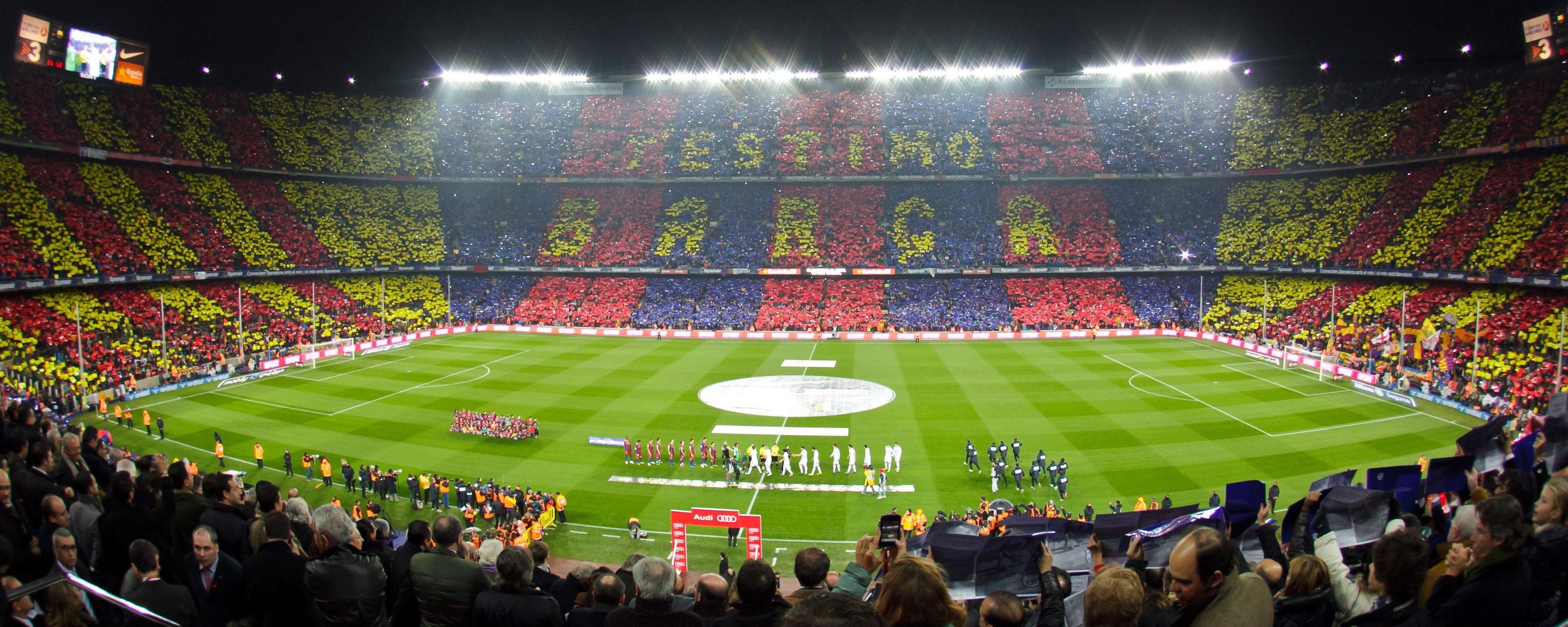
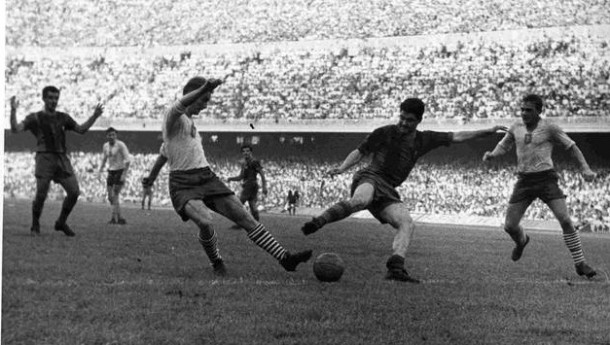
FCBarcelona.com
I have a confession to make. I was, until recently, rather underwhelmed by the Camp Nou. Then early last year I paid a visit and I got it loud and clear.
In the couple of hours I spent wandering around the stadium, the museum and the whole complex, I started to comprehend the size, the history, the symbolism and above all the fact that it is “Més que un club”.
Back in the early fifties when the Camp Nou was first conceived, there was something of a “Stadium War” being conducted by the big clubs in Iberia. Real Madrid had just opened their new stadium at Chamartin and Portuguese giants Benfica opened their Estadio Da Luz in 1954.
Barça, even with their souped-up version of Les Corts and its 60,000 capacity, were wary of being left behind, and very nearly over committed to the building of the new stadium, which in part, led to the barren years on the pitch during much of the 1960’s.
The first stone was laid on 28 March 1954 and the proposed 66 million peseta project was to be financed entirely by club socios. Designed by local architects J. Soteras Mauri and F. Mitjans Miro, it would feature two huge tiers and a modern cantilevered roof over the west side.
On 24 September 1957, the stadium was inaugurated with a match against a select Warsaw XI. The new stadium, with its 90,000 capacity had taken 3 and a half years to build and finally cost 288 million pesetas, an almost ruinous 425% over budget.
Initially, the teams form matched their impressive surroundings, with league titles in 1959 & 1960 and Copa del Rey victories in 1959 and 1963, but with an aging side and talisman László Kubala switching to Espanyol, the remainder of the sixties and early seventies were barren years on and off the pitch.
Club finances were not helped by the protracted saga that surrounded the sale of Les Corts and when it was finally sold in 1967, all of the 226 million pesetas raised were used to pay off the club’s debt.
With the club’s debt back under control, Barça set about building the next stage of the sports complex with an indoor sports hall, the Palau Blaugrana and an Ice Rink added in 1971.
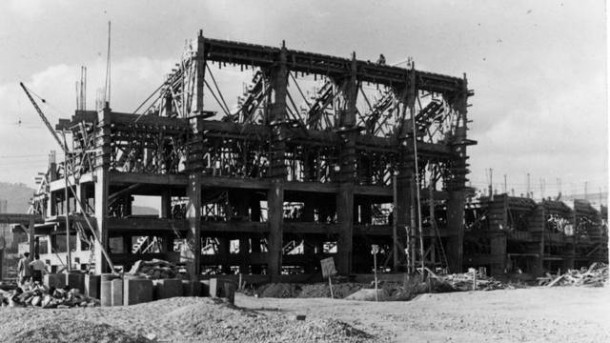
FCBarcelona.com
On the pitch, the great Dutch coach Rinus Michels was employed and in 1973 Johan Cryuff chose Barça ahead of Real Madrid. The league title returned to the Camp Nou at the end of the 1973-74 season.
The Camp Nou was chosen to stage the opening match at Mundial 1982, along with three second round matches and a semi-final. So in 1980 a major reconstruction project began which would result in the capacity increasing to 120,000.
At a cost of 1.3 million pesetas, an additional third tier was added to the three uncovered sides, along with new scoreboards and floodlights. 250 metres to the west of the stadium the club built another, albeit smaller stadium, the Mini Estadi.
The attendance for the opening match was 95,000, which was the highest of any of the matches staged at the Camp Nou, in what was generally a poorly attended World Cup. Not that Barça were complaining, they had increased the size of the stadium and for once it didn’t dent the club coffers.
The Camp Nou was now Europe’s largest and most prestigious sporting venue and during the eighties it saw its fair share of sporting and non-sporting activity. Under the tutelage of Terry Venables, the league title was captured in 1984-85 and the Copa del Rey in 1986.
Pope John Paul II paid a visit in November 1982 and became a member of the club and practically every 1980’s pop icon seemed to play the stadium.
Then, with Barcelona winning the right to stage the 1992 Olympiad, the Camp Nou was chosen to host the final of the football tournament. The 1992 Olympic soccer tournament saw Spain’s memorable last minute victory over Poland in the final and capped a hugely successful Olympiad for Barcelona.
In 1993 the club started the process of turning the Camp Nou into an all-seater arena, but to achieve this and ensure that the lowest tier of seating had decent sight lines, the pitch was lowered by 8ft.
The lighting and sound systems were upgraded during the 1998-99 season and the stadium was awarded UEFA 5-star status prior to hosting the 1999 Champions League Final.
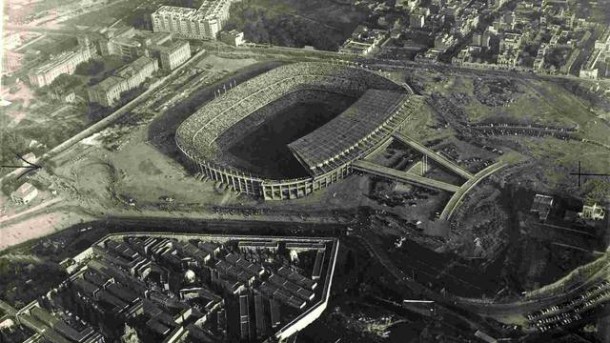
FCBarcelona.com
Structurally, very little has changed at the Camp Nou in the past decade or so.There is the perennial changing of the colour configuration of the seats, but when you have 99,000 of them, it probably is a never ending job.
Then in 2007, to celebrate the stadium’s fiftieth anniversary, British architect Sir Norman Foster won a competition to renovate the Camp Nou.At an estimated cost of 250 million euros, the plan included the addition of 7,000 seats for a maximum capacity of 106,000.
To finance this, the board approved the sale of the Mini Estadi, but just before work was due to begin in 2009, the project was halted thanks to the world financial crises and subsequent fall in real estate prices.
Since then, talk of selling the Mini Estadi has cooled, with prospective presidential candidates stating that other ways of financing the project should be found.
What of the stadium today? Well it is a truly uplifting experience, even if like me, you visit it in the pouring rain. The Museum which opened in 1984 is the city’s most popular and beautifully choreographed. Sure, some of the stairwells are beginning to show their age, but stepping out into the arena for the first time is breath-taking.
Many large stadiums have problems with sight lines, but even on the top tier, you are still remarkably close to the pitch. On the way out of the museum, you pass a video wall where hundreds of the clubs socios tell you what the club means to them.
If you ever wondered why they say “Més que un club”, then you can be in no doubt after watching their video tributes. The Camp Nou really is one of the wonders of the footballing world.
Follow @icentrocampista

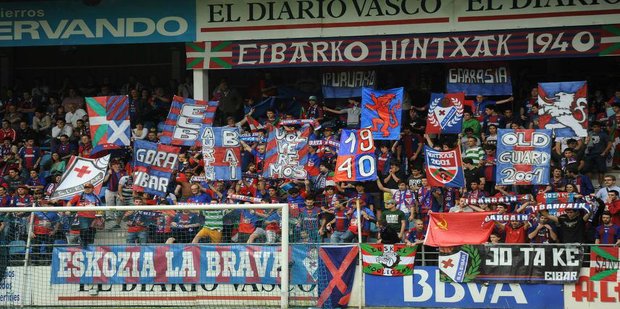

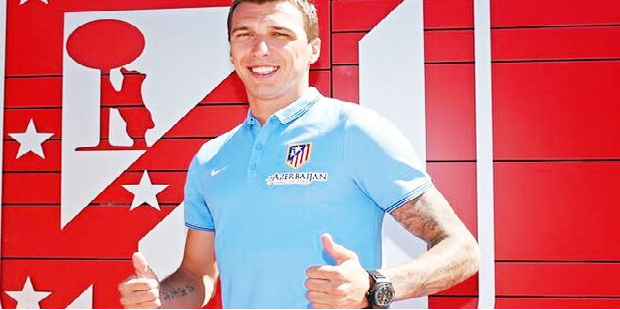


You must be logged in to post a comment Login